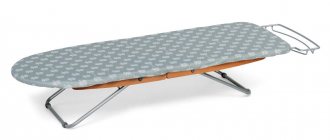The quality of goods intended for food consumption is determined by many factors. In addition to temperature conditions, exposure to moisture and shelf life, compliance with storage compatibility requirements is also an important aspect. The principles of zonal demarcation are determined by sanitary standards, and must also be taken into account when transporting and marketing any types of products that can have mutually harmful effects due to their own specific characteristics. The product proximity of food products according to SanPiN is a table of basic rules, compliance with which allows you to avoid negative consequences associated with deterioration in quality characteristics.
Legal basis
Basic provisions regulating the procedure for storing and placing goods in trade organizations, canteens and enterprises related to the restaurant industry are enshrined in the following documents:
- 2.3.2.1324-03 - a list of hygienic standards defined in relation to the terms and conditions for ensuring the safety of goods;
- 2.3.6.1066-01 - list of criteria of a sanitary and epidemiological nature.
Some categories are necessarily specified due to the specificity of the positions. For this purpose, TU and GOST are used. Each market entity is obliged to properly comply with existing requirements that determine the rules for the proximity of products in a store, public catering, when organizing transportation and storage. The supervisory authority that identifies and suppresses possible violations in this area is Rospotrebnadzor.
How long can you store?
This is an important question because it is necessary for preparing many dishes. Opinions differ, some claim that at the right temperature the shelf life is unlimited, others insist that the minced meat should be treated with caution. In fact, this product has a certain temperature and shelf life that cannot be violated.
Storing minced meat
Rules to take into account:
- Carefully inspect the minced meat you are about to buy. It should have a beautiful bright color and uniform consistency. There should be no blood streaks, visible cartilage or slippery surface. Compare it with the minced meat you make at home. It holds its shape well and does not spread on the plate. Pay attention to the smell. Do not trust the seller who will say that all minced meat has an unpleasant aroma. You should also be alert to the presence of other odors: onion, garlic or vinegar.
- Stick to fresh minced meat. It is much healthier than frozen.
- It is better to buy one type of minced meat than to purchase a mixture. This reduces shelf life.
- Minced meat without factory packaging can be produced in unsanitary conditions. In addition, minced meat quickly ventilates in the air, and you will never be able to determine the shelf life.
- It is recommended to use frozen minced meat immediately after defrosting. Leaving it in the refrigerator or on the table is prohibited.
- After adding salt, spices or other products to the minced meat, it should not be placed back in the refrigerator. This will affect the taste of the finished product. Either cook what you planned right away or initially add the ingredients before cooking. How long can I store minced meat and onions in the refrigerator? A few hours maximum.
- Is it possible to store minced meat in the refrigerator if it contains soy? Minced meat with added soy is not allowed to be stored in the refrigerator.
- The best minced meat comes from the freshest meat. A long stay in the cold does not have the best effect on the product.
All recommendations apply mostly to minced meat. Fish, mushroom or vegetable mince have their own characteristics in purchasing and storing.
Frozen minced meat
SanPiN: general overview
We are talking about a register of regulations governing the requirements regarding the hygienic condition of industrial premises and workplaces, kindergartens, schools and institutes, public facilities, quality characteristics of water, air, as well as other aspects and phenomena that can affect human health. The list covers almost all spheres of social life, and regulates the principles and laws of trade and commodity neighborhood of food products.
Consequences of non-compliance with the commodity neighborhood
Compliance with the rules for the proximity of food products during storage according to SanPin, transportation and sale minimizes the risks of untimely spoilage of products, changes in odor, development of pathogenic flora, and deterioration in external presentation. Taking into account the individual properties of a certain group of goods, their optimal storage conditions and compatibility, the company reduces its own costs for spoiled products.
Attention
It is worth considering that unfit for consumption goods are not always visible to the naked eye, and the worst consequence of non-compliance with the rules of product proximity according to SanPin is consumers who can lose not only their health due to poisoning by a spoiled product, but also their lives.
Current changes to SanPiN
The adjustments approved in 2022 identified a number of new requirements, the minimum validity period of which will be six years - until December 31, 2026 inclusive. The update of the provisions, which have remained unchanged for more than two decades, is due to significant technological changes, primarily affecting the catering industry, as well as the need to soften the operating conditions of small businesses.
SP 2.3/2.4.3590-20, adopted on the basis of the resolution of the Chief Sanitary Inspector, includes seventeen acts affecting the catering industry and taking into account the specifics of catering for citizens in various public and private institutions. One of the document’s key priorities is to ensure standards that help preserve the health of the country’s population. In addition, new areas of trade activity related to food products were taken into account, such as delivery, takeaway sales, and catering.
Taking into account various factors
When forming SanPiN requirements regulating the rules of commodity proximity of food and non-food products, various aspects are taken into account:
- Biological—potential contaminants and infectious pathogens that are more likely to spread if work processes are not followed.
- Chemical - the influence of toxic substances and preparations, the contact of which with food products is possible in production, as well as during sanitary measures.
- Physical - thermal effects, the consequence of which is a change in the quality characteristics of food products.
Presumption of good faith
The updated standards are based on the HAACP principle, which is based on the analysis of potential risks and the identification of critical control points. Enterprises have the right to control key production processes at their own discretion, but a mandatory condition is the implementation of a system of instructions that meet the specified standard. A violation is grounds for prosecution in the form of a fine, the amount of which is determined by the content of Article 14.43 of the Code of Administrative Offenses.
Commodity proximity of food products according to SanPiN in a refrigerator at school
Refrigeration equipment located on the premises of catering establishments serving educational institutions is subject to increased requirements.
According to SanPiN 2.4.5. 2409-08 “Sanitary and epidemiological requirements for the organization of meals for students in general education institutions, institutions of primary and secondary vocational education” school refrigerators must be:
- modern;
- equipped with control thermometers;
- be subject to annual checks for compliance with passport characteristics;
- their number must be sufficient to comply with the rules of commodity neighborhood in the required volume.
According to SanPin, raw and prepared foods at school must be stored in separate refrigerators marked with appropriate markings. Failed refrigeration equipment should be restored as quickly as possible, and for the time required for repairs, changes should be made to the daily menu so as to fully comply with sanitary requirements when preparing dishes.
Seven principles of HACCP
The concept under consideration is actually a system structure that allows you to identify, evaluate and influence critical aspects that negatively affect the quality of products. The transition to an updated format implies the development and implementation of regulations that prevent possible risks before they manifest themselves in practice. The basic algorithm is based on the following fundamental principles:
- Analysis of the degree of significance of negative factors.
- Establishing critical control points.
- Determination of maximum permissible values.
- Integration of monitoring mechanics.
- Formulation of actions for correction.
- Documentary control.
- Systematic review of documentation.
Honey
Shelf life: up to 3 years
Honey is an excellent alternative to sugar, which contains many useful substances. The shelf life of honey can reach 2–3 years. It is better to keep the product away from heat and direct sunlight. Of course, over time, honey will lose a number of beneficial properties, change color and become sugary, but it will not deteriorate. In addition, if desired, it can be “rehabilitated” quite easily. This problem can be solved using a water bath: a jar of honey can be placed in a saucepan and heated over low heat until the original consistency returns. Another option is to melt the honey in the microwave.
Advantages of new sanitary rules for business
New SanPiN standards reduce the severity of the requirements for small establishments, the halls of which are limited to no more than 25 seats. Compliance with this criterion now makes it possible to get by with one toilet, which both clients and employees have the right to use, while the entrance must be fenced off from warehouses and work shops. It is also allowed to have culinary products and raw materials together in one chamber, provided that all products are packaged in containers. The mandatory presence on staff of a separate employee responsible for the function of cleaning the bathroom has been abolished, which helps reduce the financial burden on enterprises with a small turnover.
Homemade minced meat
To store minced meat or fish in the refrigerator without losing its taste, it is worth considering several points.
- The product prepared at home can be stored for no more than 12 hours.
- When making it at home, you do not need to add salt and spices when cranking. They make the meat fibers tougher. And if you leave minced meat with onions for storage, it will acquire an unpleasant brown color. It is better to season it immediately before preparing the dish.
- It is better to store minced meat from different types of meat separately.
- Be sure to pack in cling film, a plastic container with a lid or foil. Place the foil in a bag or on a plate to prevent leakage.
- Store separately from other products. The most suitable place for this is the zero chamber (freshness zone), which has a constant temperature of 0°C and low humidity of 50%, which prevents the growth of bacteria.
- A product that has undergone heat treatment—fried—will last a little longer. Its shelf life is 24 hours.
We suggest you familiarize yourself with what temperature should be in the refrigerator.
Storage periods directly depend on the degree of processing and grinding of food. The meat will last the longest in one whole piece; the shelf life of goulash will be shorter, and the shelf life of minced meat will be even shorter. This happens because during the cooking process the possibilities for the penetration of bacteria and the area of contact with air increase.
Important changes from 2021-2022
Another significant aspect that affected such forms of business as off-site sales, delivery services and catering was the decision to abolish the requirement for the mandatory execution of a declaration of conformity. In addition, starting from January 1, one of the key documents for catering organizations has become a technological map - the new rules determine the need for strict adherence to the documented production cycle, right down to the compliance of the names indicated on the menu.
In order to control the temperature of finished dishes entering the distribution line, thermometers must now be used. The installation of equipment also affected refrigerators and storage areas, where hygrometers and thermometers were required to be placed. Enterprises whose specific work involves interaction with semi-finished products, but do not have a separate workshop for processing, will have to abandon the use of raw materials in any form - or take care of changing the functional purpose of the premises at the facility.
Increased demands on employees
The rules on daily examination for the presence of skin abnormalities and pathologies, which previously applied only to workers at production sites, now apply to all personnel who in one way or another come into contact with food. It became a mandatory condition to warn customers of the establishment about the presence of ingredients in the recipe that could provoke an allergic reaction, so administrators and waiters must clearly know the composition of each dish.
Why do you need a hygiene journal?
A standard accounting form, a sample of which is presented in the appendix to SanPiN, is necessary to record the results of daily examinations and surveys, as well as to confirm admission by the responsible medical worker or the person performing his functions.
Commodity proximity of food products according to SanPiN in public catering
At catering establishments, all products, semi-finished products and ready-made meals must be labeled according to SanPin and placed on separate shelves in refrigeration units. It is unacceptable to leave containers with any types of products uncovered. Spoons and other cutlery should not be left in prepared dishes or preparations.
For your information
When preparing dishes from different cuisines at one enterprise, according to SanPin, it is necessary to adhere to the principle of zonal separation of premises and refrigeration equipment. So, if Japanese cuisine is served in a cafe, then to prepare it you need to keep the room temperature below +16°C. Separate refrigeration chambers should also be provided for raw fish.
It is unacceptable to store good goods together with spoiled or expired ones. Products subject to write-off must be thrown away or stored in separate refrigerators.
Attention
Any foreign objects or personal belongings of enterprise employees must be kept in a specialized room. Eating is also prohibited in production areas.
Terms and conditions and storage of products in the store
Differentiation into several types, for each of which recommendations are provided to prevent the deterioration of quality characteristics, is determined by SanPiN standards. Group elements must be located in separate isolated compartments - if there is sufficient space - or in chambers that maintain the proper temperature conditions.
| Category | Temperature, оС |
| Dairy products | from zero to +8 |
| Sour cream, butter, pasteurized products | |
| Meat and semi-finished meat products | |
| Fish and fish products | |
| Cheeses | |
| Freezing | <=-15 |
It is worth noting that the principle of differentiation also applies to pure raw materials and blanks.
Increased deadlines
The shelf life of meat products increases, mainly due to lower temperatures.
Cold canning
Freezing involves a decrease in temperature by 1-2⁰С compared to cryoscopic (-2 -3⁰С). In this state of aggregation, meat is stored 2-3 times longer than refrigerated.
Duration of freezing meat at -25⁰С:
- beef: 6-10 hours;
- pork: 4-8 hours;
- lamb: 2-3 hours.
At -18⁰С the process takes one and a half to two times longer. At the next stage, the frozen meat is kept in a chamber at -2⁰C for 24 hours. Meat processed in this way remains safe and of high quality much longer than a refrigerated product.
Freezing
Frozen meat and meat products (with a temperature in the thickness of the muscles no higher than -8⁰С) can only be stored in a freezer or industrial freezers. Technologists use single-phase and two-phase freezing:
- With single-phase, fresh meat is frozen.
- The two-phase approach involves pre-cooling the product.
In the first case, the organoleptic properties change much less, so this method is preferable. Meat is frozen at temperatures from -23⁰С to -35⁰С and relative humidity 90-92%. If forced air circulation is provided in the chamber, the freezing process goes faster.
Specific storage times in freezers depend on the type of frozen food and temperature conditions:
| Type of meat product | Shelf life at temperature, o C, months | |||
| – 21 | – 18 | – 15 | – 12 | |
| Beef and lamb meat: | ||||
| 1 category | 18 | 12 | 9 | 6 |
| 2nd category | 15 | 10 | 7 | 5 |
| Pork | ||||
| with skin | 15 | 10 | 7 | 5 |
| without skin | 12 | 8 | 6 | 4 |
| Chicken, chickens, turkey, game | 15 | 10 | 7 | 5 |
| Waterfowl meat | 12 | 8 | 6 | 4 |
| Poultry by-products | up to 4 – 6 months | |||
Additional processing
In addition to low temperatures, manufacturers use various types of processing of meat products. The use of carbon dioxide, ozone, ultraviolet and other types of irradiation makes it possible to completely stop or temporarily reduce the growth of pathogenic microflora. Processed food stays fresh longer.
Compatibility
The following table according to SanPiN for public catering, shops and restaurants shows the commodity proximity of food products in warehouses, refrigerators and freezers, violation of the rules of which is grounds for the application of penalties.
| Group | Category | Temperature, оС | Special Requirements |
| Freezing | Meat | up to -30 | Free air circulation, no lighting, stable conditions |
| Fish | |||
| FROV | |||
| Ice cream | |||
| Oil and fats | |||
| Conservation | Meat, fish, vegetables | from 0 to 20 | |
| Preserves and jams | |||
| Long lasting confectioner | |||
| Dry products | Flour, cereals | from 12 to 18 | No temperature changes |
| Salt, starch | |||
| Sugar | |||
| Spices, spices | from 0 to 20 | ||
| Tea | |||
| Coffee | |||
| Okhlazhdenka | Meat | up to -4 | Ventilation |
| Fish | |||
| Eggs | from 0 to 4 | ||
| Dairy products | |||
| Butter, fats | up to -5 | ||
| Fish (salting, smoking) |
How to determine the freshness of meat and fish and understand that the product has gone bad?
Characteristics of fresh meat:
- Bone marrow fills the internal cavity of the bone and is easily separated from it. A white or gray tint to the bone marrow indicates a rotten product.
- Elastic structure: after pressing on the fabric, the shape is restored.
- Color. Pork is pale pink, beef or lamb is dark red. A yellowish and grayish tint indicates damage.
- Smell. Beef and lamb have a specific smell, pork has a faint smell. The meat should not taste sour or rotten.
Spoiled meat differs in appearance: it is covered with mucus and a sticky and cloudy liquid flows out of it.
Spoiled meat differs in appearance
The freshness of fish is determined by the following characteristics:
- faint odor with a taste of iodine;
- shiny, tight-fitting scales;
- lack of bloating in the abdominal area;
- transparent eyes;
- reddish gills.
Eating spoiled meat or fish is contraindicated.
Consequences of violating standards
Organizations that do not adhere to established requirements increase the likelihood of premature food spoilage, which leads to financial and reputational losses. It is worth noting that changes in properties and characteristics are not always manifested externally, but can cause poisoning that poses a threat to the health and life of consumers.
How to prepare meat, poultry or fish for freezing
How to properly prepare food for freezing:
- It is recommended not to wash the meat: water accelerates the decomposition processes in the tissues.
- It is better to divide the product into small pieces, since large pieces are more susceptible to spoilage.
- Soft tissue should be separated from the bone.
It is recommended to wrap it in a napkin soaked in vinegar.
The fish should be gutted, washed and removed excess moisture
It is not recommended to defrost meat in water (cold or hot); it is better if it thaws gradually in the refrigerator.
You cannot store it in the refrigerator on a wooden cutting board, which will quickly absorb the juice: the taste and nutritional qualities are lost.
The fish should be gutted, washed and excess moisture removed. We also recommend reading how to properly defrost fish.
Sausage, frankfurters, ham and lard
Smoked and boiled sausages contain up to +8 °C for a period of time, in hours:
- boiled sausage, ham, boiled pork – 72;
- sausages, sausages, liver and blood sausage – 48.
Boiled-smoked and half-smoked sausage is stored under similar conditions for 10 days, and at +8...+20 °C - 72 hours. Semi- and raw smoked sausages in a vacuum do not spoil at +20 °C for 4 days.
Lack of packaging integrity immediately changes the conditions and terms of preservation.
The shelf life of ham is also determined by the degree of heat treatment and corresponds, in days:
- boiled whole – 5-7, cut – no more than 3;
- smoked-baked – 5-8;
- boiled and raw smoked – up to 45;
- dry-cured – 180.
Fresh lard is kept at +10 0C and below. When frozen, it preserves its taste and nutritional properties for about a year. It is good to store salty in three-liter jars or wrapped in paper.
Fresh lard is kept at +10 0C and below
It is intended for long-term storage in cool conditions. Suitable packaging for hot smoked lard is paper or foil.
Fish is a perishable product. When fresh, it is stored at -2...0 °C. At higher temperatures, containers with ice cubes are suitable.
It is prohibited to store fresh fish indoors; it must be immediately processed in any form. Fried fish is kept at temperatures up to +2 °C for no more than 48 hours.
Before freezing, the fish is never skinned, which prevents it from drying out. In a chamber maintained below -20 °C, the product is preserved for 3-6 months.
Depending on the degree of processing, salted fish is stored in vacuum packaging, in days:
- lightly salted – 6-7;
- medium salted – 10-12;
- highly salted – up to 30.
In the refrigerator, salted salmon in a regular bag is suitable for consumption for no more than 3 days.
Smoked fish, depending on the cooking method and in sealed packaging, is suitable for:
- hot smoked – 3 days;
- cold – 10 days.
Minced meat and fish
Only freshly prepared minced meat is frozen ; it is kept in compressed form for no more than 3 months. Repeated freezing leads to the destruction of beneficial qualities.
Only freshly prepared minced meat is frozen
Minced meat belongs to the group of perishable products; at +8 °C it remains fresh for 6 hours.
Mixing minced meat from different types of meat and adding spices speeds up the spoilage of the product , so these manipulations are done immediately before preparing cutlets or other products.
Storage period for products made from minced pork and semi-finished products made on its basis, in hours:
- portioned (beefsteak, langet) – up to 36;
- minced meat, stuffed cabbage rolls, pepper – 6.
Minced fish cutlets stored in the refrigerator must be cooked within 12 hours.
Refrigeration Standards
The provision in question also defines the requirements for temperature installations located in enterprises. A prerequisite is the presence of devices to monitor humidity and temperature inside refrigerators, while the use of mercury thermometers is prohibited. The compartments are subject to markings that allow identification of the category of stored products. A ban on the combined placement of freezing, refrigeration and raw materials, as well as exceeding the permissible capacity established by the instructions for use, is separately stipulated.
Chilled
Most often we use minced meat in the cooking process. It comes in beef, chicken and pork. The products turn out tasty when mixing different types, but they must be stored separately. Meat product brought from the store must be immediately placed in the refrigerator.
At a temperature of 0-5º it can remain for up to 12 hours. However, sometimes this time is much shorter, because it is directly determined by the quality of the raw materials and the duration of storage before sale.
In no case should the storage period exceed one day. Otherwise, an unpleasant odor will appear, which indicates deterioration in quality and unsuitability for food use.
Other types of minced meat can also be stored in the refrigerator:
- fish – no more than 6 hours;
- mushroom (from boiled mushrooms) – 1-2 days.
Rules for refrigeration equipment
The greatest difficulties in complying with sanitary standards arise in small enterprises with limited space and resources. Refrigerator models are equipped with built-in sections and shelves that allow you to distribute the contents in a safe way. Among the main recommendations it is worth highlighting:
- Storing sauces and milk cartons in the doors.
- Using separate egg cartons.
- Distribution of meat into containers, limiting contact with other products.
Raw materials and semi-finished products, as well as bakery products, should be separated from finished products. The close proximity of FOV, cheese, sausages and smoked meats has a negative impact on organoleptic indicators.
Is it possible to store minced meat if the refrigerator is out of order?
If the refrigerator is out of order, then storing the minced meat cannot be too long. The product can be stored for only a couple of hours.
To check the freshness of a meat product, take a teaspoon or tablespoon of minced meat and place it in boiling water for 5–10 minutes. If there is no foreign odor and the broth remains clear, then the product is fresh. If the protein floats on the surface of the water in flakes and the broth is cloudy, then the meat should be thrown away - it has spoiled.
Adhering to the basic rules listed in the article, it will not be difficult for the housewife to prepare delicious meat dishes. Do not forget that you should add foods such as salt, seasonings, eggs and bread after defrosting the food. But it’s better, of course, not to store minced meat in the refrigerator for too long, but to use freshly prepared one.
Rules for schools
The standards for equipment used in educational institutions have higher requirements. The number of refrigeration units must meet the conditions for compliance with sanitary regulations. In the event of technical malfunctions, the menu must be adjusted to exclude the presence in the diet of dishes that cannot be prepared at the moment.
Salt
Shelf life: more than 10 years
Throughout almost the entire history of mankind, salt, in addition to its culinary properties, served as an excellent natural preservative.
With its help, people have extended the life of many products, even such capricious ones as, for example, fish. Obviously, the salt itself can also be stored for decades. Despite the fact that this product does not have any problems with microbiology, it is still better to approach its storage carefully. The packaging must be airtight, otherwise the salt will absorb moisture from the surrounding air and turn into stone. However, it will not lose its properties; if desired, it can be crumbled again and eaten. Thank you for reading this text to the end.
Follow the news, subscribe
to the newsletter.
When quoting this material, active link to the source
required.
Prohibitions and restrictions
It is strictly prohibited to work with food products whose characteristics do not meet the standard due to the expiration date or other factors that have caused irreversible changes. Actions that could provoke poisoning or infection of consumers are suppressed, such as:
- Preparation of dishes from products that do not have quality certificates or veterinary certificates.
- Use of cuttings, heads, blood substances, contaminated eggs in technological processes.
- Formation of curd mass from a milk base that has not undergone pasteurization.
In addition, the sale of cooked, preserved, pickled and smoked products is possible only with a permit issued by the epidemiological control of the RPN.
Prohibited use of products
In trade and catering establishments, the use and sale of spoiled and expired products that have changed appearance and smell, with missing expiration date labels, is prohibited.
To avoid mass poisonings and the spread of infections in public catering establishments, the use and production of:
- any meat and fish products in the absence of a veterinary certificate;
- waterfowl eggs, as well as contaminated chicken eggs;
- meat heads, trimmings, blood;
- cottage cheese from unpasteurized milk;
- production of any canned food in sealed packaging;
- drying and drying fish and mushrooms, etc.
Attention
For the preparation and sale of semi-finished products, smoked meats, canned vegetables, jellies and jellied meat, poultry and fish, pickled and salted vegetables, as well as other products dangerous from an epidemic point of view, a conclusion from the state sanitary and epidemiological service of Rospotrebnadzor is required.
Legal liability
The provisions established under Federal Law No. 52 determine the possibility of bringing perpetrators to administrative or criminal liability for violating sanitary rules. Any deviation can be a reason for punishment, be it the wrong product placement of vegetables and fruits in a grocery store, or the lack of labeling on semi-finished products in a school canteen. The law also provides for temporary or complete cessation of work in cases where it is proven that the activities of an enterprise pose a threat to consumers.
Selection of semi-finished product
To buy good minced meat, you must follow the following recommendations:
Look carefully at the packaging, which displays the expiration date and its type.
Minced pork by weight has a light pink tint, beef mince is reddish, and poultry mince is light.
If the mass contains dense fibers, it means that it contains not only meat, but also veins and films.
There should be no foreign odors. There should be a smell of fresh meat.
It is better not to buy frozen minced meat.
Weathered minced meat with a dark crust.
Transparent, reddish liquid on the trays indicates good quality, dark - it is stale.
A product without liquid indicates the addition of gelatin or starch.
Ground chicken and turkey that are runny and whitish in color indicate that there is little meat in them, and the minced meat mainly consists of skins, tails and fat.
7 Control methods
7.1 Selection and preparation of samples for testing - according to GOST 7269, GOST 26668, GOST 26669, GOST 26670, GOST 26929, [1]*, [2*].
________________
* See Bibliography section. — Note from the database manufacturer.
General requirements for conducting microbiological tests are in accordance with GOST ISO 7218.
7.2 Determination of organoleptic indicators - according to GOST 7269.
7.3 Determination of the freshness of meat and offal in blocks - according to GOST 19496, GOST 23392.
7.4 Determination of the mass fraction of protein - GOST 25011.
7.5 Content of fat mass fraction - according to GOST 23042.
7.6 Determination of microbiological parameters:
pathogenic microorganisms, including salmonella, according to GOST 21237, GOST 31659;
L.monocytogenes - according to the regulatory documents of the state that adopted the standard;
spores of mesophilic and thermophilic clostridia - according to GOST 10444.9;
mesophilic aerobic and facultative anaerobic microorganisms (KMAFAnM) - according to GOST 10444.15, bacteria of the Escherichia coli group (coliforms) - according to GOST 31747.
7.7 Determination of toxic elements:
mercury - according to GOST 26927;
arsenic - according to GOST 26930, GOST 30538, GOST 31628;
lead - according to GOST 26932, GOST 30178, GOST 30538;
cadmium - according to GOST 26933, GOST 30178, GOST 30538.
7.8 Definition of pesticides - according to regulatory documents of the state that has adopted the standard.
7.9 Definition of antibiotics - according to the regulatory documents of the state that adopted the standard.
7.10 Determination of radionuclides - according to regulatory documents of the state that has adopted the standard.
7.11 The temperature of meat in blocks and offal in blocks is determined in the thickness of the tissue at a depth of at least 1 cm using a liquid (non-mercury) thermometer, a digital thermometer with a measurement range from minus 30°C to plus 100°C, with a division value of 0.1°C or other devices that provide temperature measurement in a given range, included in the State Register of Measuring Instruments of the state that has adopted the standard.
How to freeze correctly
Before you begin directly distributing meat products in the freezer, you need to properly prepare it and determine the place for the meat. For this purpose, the place with the lowest temperature is cleared from the products already lying there. This must be done 4-5 hours before placing the meat in the freezer.
Freeze mode must also be enabled if this function is activated separately. If there is no such mode, then the refrigerator regulator is switched to the “coldest” mode. Before freezing, meat and offal must be prepared first.
Attention! It is not recommended to wash the product before freezing, as this reduces its shelf life.
Preparation involves sorting the product by type, while it is recommended to cut off the fat from the muscle fibers, since it has a shorter shelf life and can lead to premature spoilage. It is also recommended that, before transferring the meat to the freezer, keep the product in the refrigerator for 3-5 hours - the colder the product before freezing, the better.
The fundamental mistake of household (home) freezing is the size of individual pieces. It is customary to freeze large cuts of meat, but this harms the quality of the product. This is because the large piece cools too slowly and the fiber structure changes. This negatively affects the final juiciness.
To save space in the freezer and maintain the freshness of the product, you need to divide one large piece into several smaller ones so that each of them is designed to prepare one dish. In this case, freezing will be faster and more uniform, and will also eliminate the need to cook all the frozen meat at once.
Before putting it in the freezer, it is recommended to wrap the meat in cling film or parchment paper. Afterwards, individual pieces are packaged in sealed or plastic bags (there should be no air inside). It is better to pack food tightly - this will maintain the temperature in the freezer and give time in case of an unexpected power outage (it will keep the meat frozen longer). Each package must be labeled; the date of freezing and the name of the product should be indicated on the tag.
It is permissible to freeze the bird either as a whole carcass or divide it into separate parts. But, you need to get the liver and giblets out before putting them in the freezer. If you plan to store minced meat in the freezer, then it needs to be divided into portions of approximately 300-500 g. Otherwise, there are no differences from freezing meat at home.
Appendix A (reference)
Information about the nutritional and energy value of 100 g of product
| Product name | Protein, g | Fat, g | Calorie content, kcal |
| Class A - trimmed meat, frozen in blocks | |||
| Group 1 beef | |||
| Subgroup 1.1 | 18,9 | 9,0 | 156,6 |
| Subgroup 1.2 | 18,8 | 12,0 | 183,2 |
| Subgroup 1.3 | 18,6 | 20,0 | 254,4 |
| Subgroup 1.4 | 19,7 | 9,0 | 159,8 |
| Group 2 pork | |||
| Subgroup 2.1 | 16,5 | From 13.0 to 17.0 incl. | From 183.0 to 219.0 incl. |
| Subgroup 2.2 | 15,5 | From 28.0 to 32.0 incl. | From 314.0 to 350.0 incl. |
| Subgroup 2.3 | 14,4 | 50,0 | 507,6 |
| Group 3 horse meat | 22,0 | 12,0 | 196,0 |
| Group 4 lamb | 17,2 | 12,0 | 176,8 |
| Class B - processed by-products, frozen in blocks | |||
| Group 1-4 (beef, pork, horse, lamb) | |||
| Liver | 18,0 | 3,7 | 105,3 |
| Language | 15,9 | 16,0 | 207,6 |
| Heart | 16,0 | 3,5 | 95,5 |











